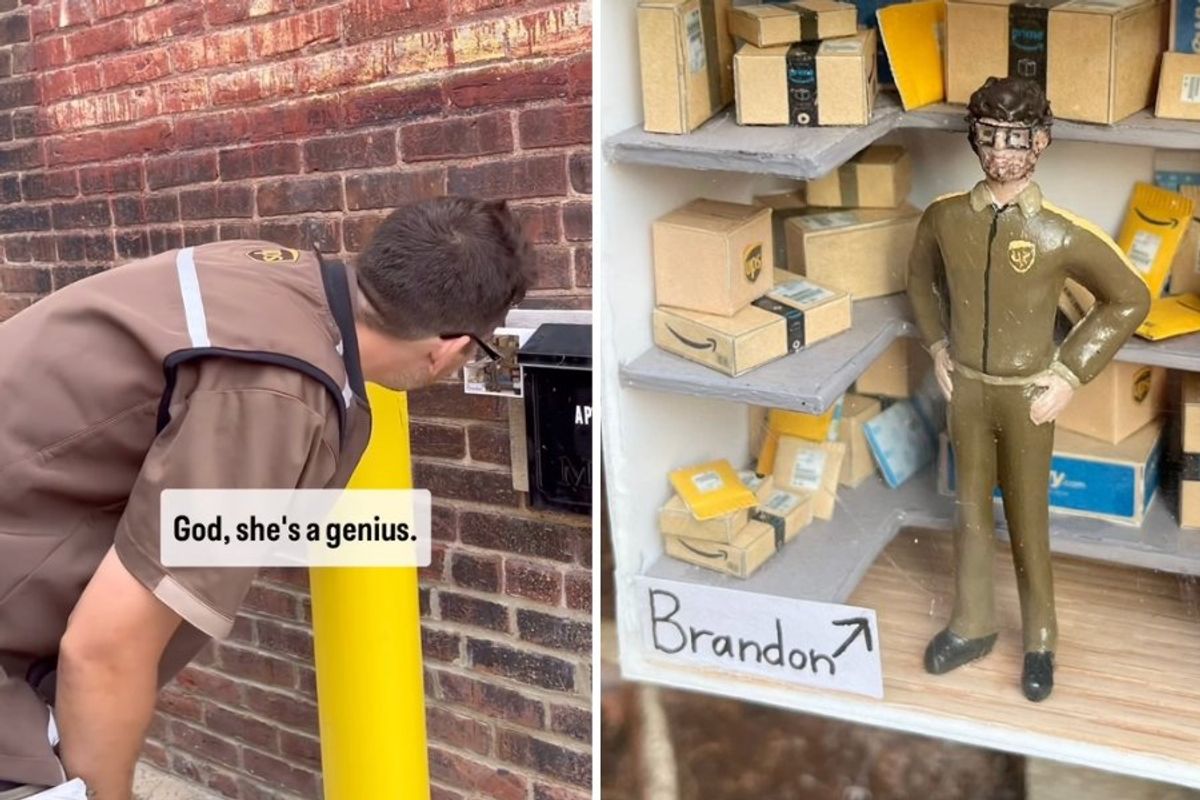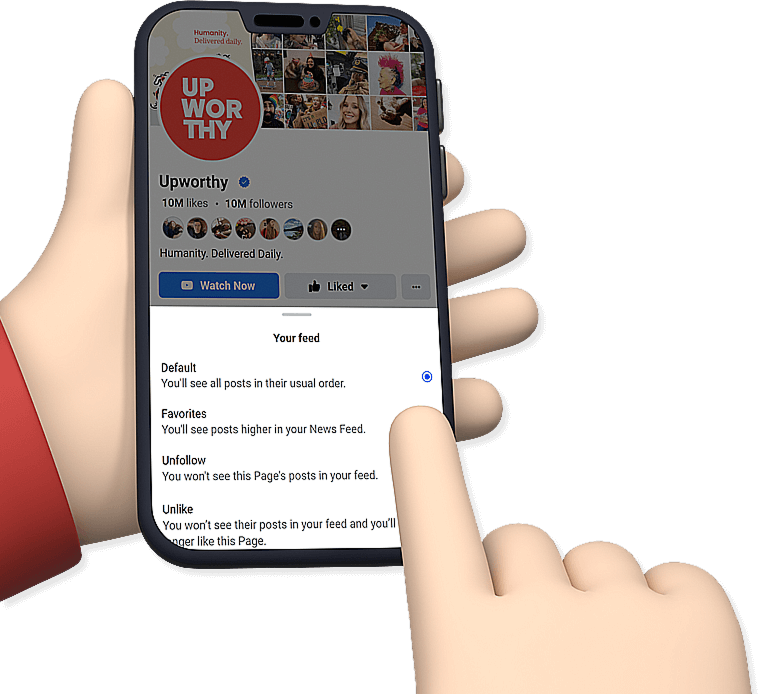Teen honors local UPS driver with a tiny public diorama and his reaction is so wholesome
Brandon is beloved in the community.

Brandon the UPS driver checks out the art installation made in his honor.
Service workers help our communities run more smoothly, but their contributions can often go unrecognized. In some instances, however, people in service jobs become household names and beloved fixtures in their community.
A UPS driver named Brandon is apparently one of those people in Red Wing, Minnesota.
Red Wing resident Andrea Hanson shared how her 14-year-old daughter Mari created a delightful art installation called "Petite Postal Place Featuring: Brandon." Set in a tiny box, the square diorama includes shelves of mini boxes and packages with incredible detail, right down to the Amazon Prime packaging and barcodes, with Brandon the UPS driver standing among them.
Hanson shared a video on Instagram of Brandon's reaction to seeing the art installed next to the postal box in his honor, and it's so wholesome. "Shut up!" he kept saying. "I love it…that is the coolest thing ever."
Watch:
Brandon clearly appreciated the gesture—"She made that just for me, though?"—and was blown away by Mari's attention to detail—"The Chewy box!"
Other people also loved the art as well as Brandon's reaction to it:
"Bless all delivery drivers!!!! You have no idea how much that made his day!"
"It’s the 'shut up' and the '4H' and 'fair' giving me those MN vibes. Love this so much."
"“Wait til my buddies see this” awwwwwww.❤️"
"Love his reaction. Saying he’s gonna share with his friends at work. 🥹"
"That is so cool!!! She is very VERY talented! 👏👏 And that is the cutest reaction ever. 🥹🥹"
"Love this. ❤️ His genuine appreciation and love he felt. Nice job!"
Mari's art is part of the Art in the Alley community initiative "designed to turn overlooked spaces in downtown Red Wing into vibrant, engaging places, through the power of community art." The people of Red Wing are encouraged to add something artistic to spaces like the alley where Mari put her art piece and to go check out what others have done.
Mari shared a description of "Petite Postal Place Featuring: Brandon" on the city's downtown website along with her history with art:

A miniature postal room with shelves filled with packages. Brandon the UPS man is standing proudly in front of the boxes, ready to deliver parcels with his radiant personality. Bio: Once I had the capability to hold a marker, I have been creating artwork. One thing that has been on my Christmas list every year is art supplies. Our dining table was always filled with clay, markers, paint, and paper. When my Dad moved to a new office in the house, I got his old one (which is now turned into my art room). It is filled with every art supply imaginable and is all in its own organized spot. Now I spend hours there every day, creating whatever I think up.
Hanson shared with Upworthy's audience on Instagram that her daughter was thrilled that her art has been making the viral rounds and that Brandon has been tickled by it as well:
"I just want to say that my daughter is so overwhelmed and grateful you’re seeing her hard work. She’s not on social media yet…only 14. But I’ve shown her you cheering her on to never quit making art. 🫶🏻 You are making a difference in her life. And Brandon feels like a rockstar. (Which he is!) Such well deserved love for our local UPS guy. He deserves a raise!!! ❤️"
It's heartening to see community being celebrated in so many ways here, from Brandon's obviously stellar service to Mari's appreciation through art to the community encouraging artistic expression to the people of the internet sharing the love. There may be a whole lot of ick in the world, but shared joys like this are potent reminders that humanity can be a force for good.
This article originally appeared last year.
- Artist captures how strangers react to her body in public and it's fascinating ›
- Wil Wheaton gave a perfect explanation of how to separate problematic artists from their art ›
- Street artist creates delightful 3D scenes in walls and walkways for everyone to enjoy ›
- Doorbell camera catches UPS driver dancing with joy after free snack - Upworthy ›
- New study shares the state with the worst drivers in the U.S. - Upworthy ›





 James Roh
James Roh James Roh
James Roh A man and woman chatting.via
A man and woman chatting.via  Coworkers having a conversation.via
Coworkers having a conversation.via  Coworkers having a conversation.via
Coworkers having a conversation.via  The more passionate you are about your goals, the more secretive you should be.
The more passionate you are about your goals, the more secretive you should be.  A baby boomer couple.via
A baby boomer couple.via  A grandma in the garden. via
A grandma in the garden. via  Baby boomers throwing up a peace sign. via
Baby boomers throwing up a peace sign. via